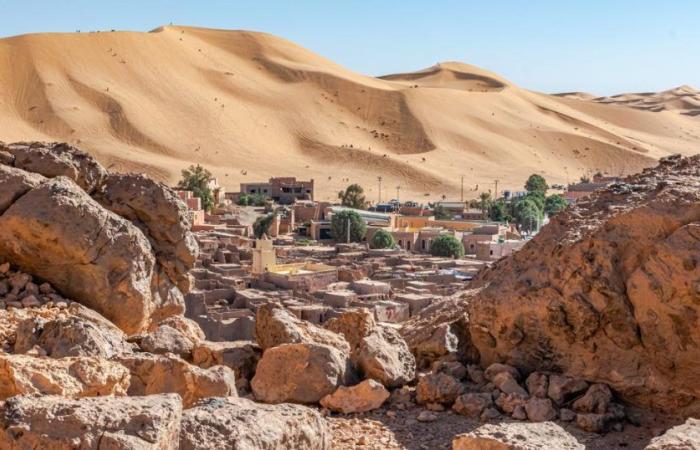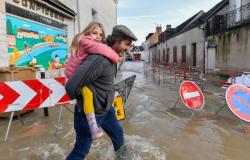After torrential September rains, spectacular images show the dunes of the Sahara Desert surrounded by water.
The Sahara Desert has not been flooded for almost 50 years. This Friday, impressive images show Sahara dunes surrounded by water in Morocco, reports the agency Associated Press. Record rainfall was recorded in the south of the country, up to more than 200 millimeters of water in just 48 hours in certain regions, or half of the annual rainfall in these areas with an arid climate, reports the Moroccan website Hespress . These torrential rains notably took place during two episodes of “exceptional climatic and atmospheric destabilization”from September 6 to 9, then from 19 to 22.
These extra-tropical storms, as meteorologists call them, have profoundly transformed the landscape of the Moroccan Sahara. Significant flooding affected the province of Tata where “the mountainous terrain played an aggravating role, facilitating the rapid accumulation of water in valleys and basins, which led to a rapid rise in rivers and ravines”explain Hespress. In particular, Lake Iriqui, located between Zagora and Tata, dried up for decades, has filled with water, reports the Guardian.
”
data-script=”https://static.lefigaro.fr/widget-video/short-ttl/video/index.js”
>
“These phenomena risk becoming more frequent and recurrent”
“It’s been 30 to 50 years since we’ve had this much rain in such a short time”Houssine Youabeb, an official at the Moroccan meteorological agency, told AP. He explains that when the air contains more moisture, it promotes evaporation and causes more storms. And this phenomenon could worsen with global warming. “Due to rising temperatures, the hydrological cycle has accelerated. It has also become more erratic and unpredictable, and we face increasing problems of too much or too little water.explained to the British daily Celeste Saulo, secretary general of the World Meteorological Organization.
“These phenomena [de crues et de pluies diluviennes] are likely to become more frequent and recurrent”agrees the general direction of Moroccan Meteorology, which explains that “climate change causes the intertropical convergence zone to move northward”.
This flood caused the death of eighteen people, reports AP. Under the pressure of the waters, fifty-six houses collapsed. Several roads were damaged, disrupting the operation of infrastructure.






